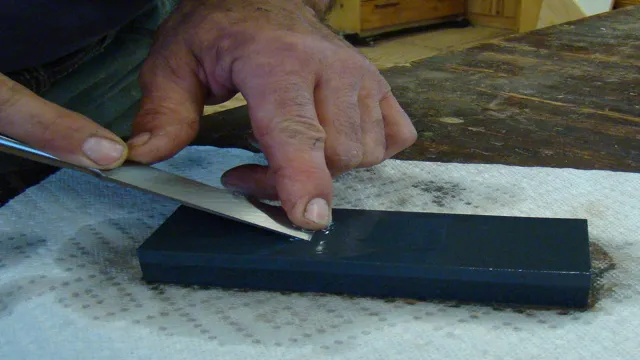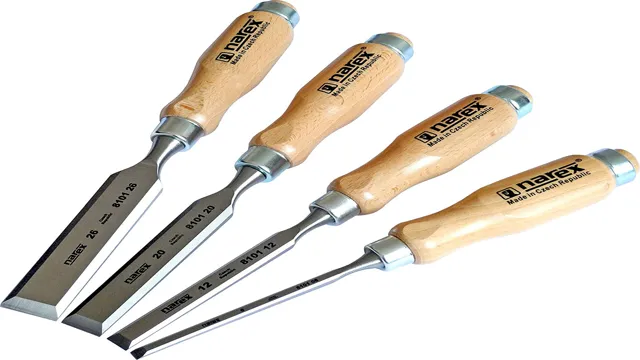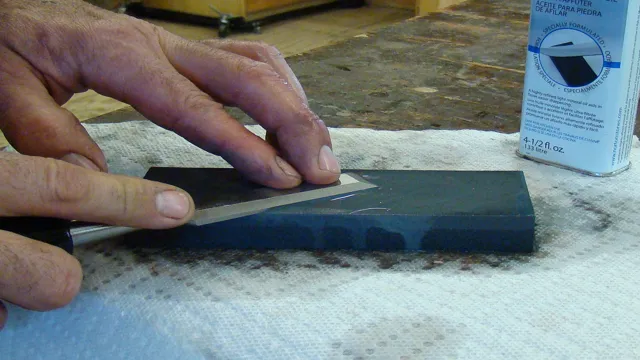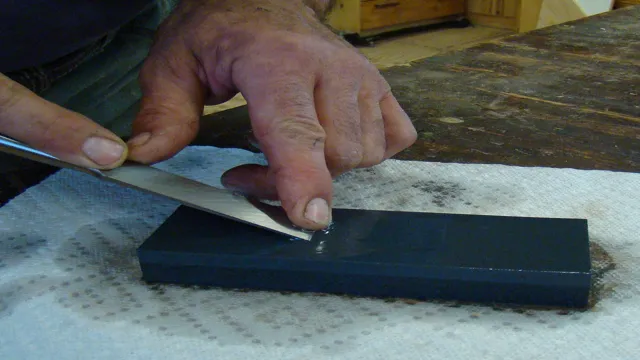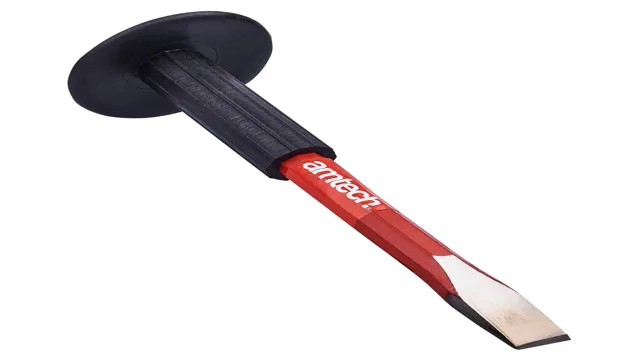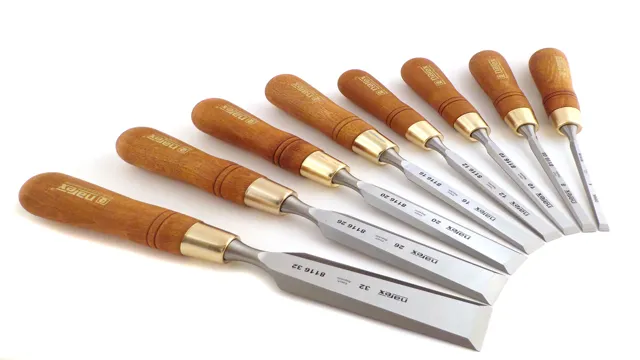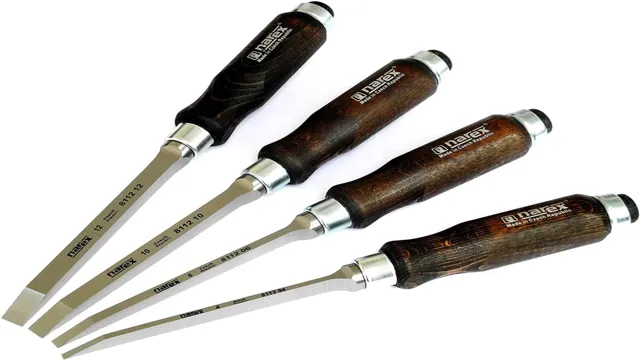What Are the Different Types of Wood Chisels and How to Choose the Right One?
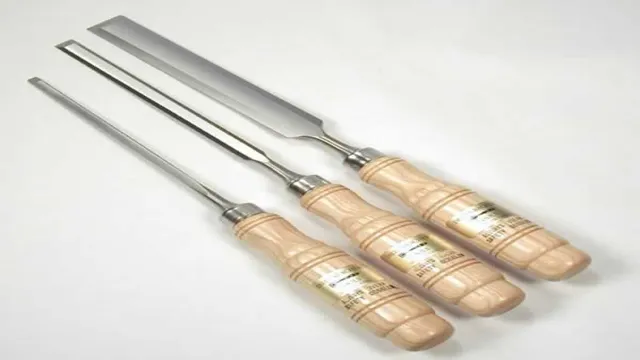
Woodworking is a fulfilling hobby that requires skill, patience, and the right tools. One of the most essential tools for anyone who wants to take up woodworking is a chisel. Chisels are an essential hand tool that every woodworker, from beginner to expert, should have in their toolbox.
When it comes to chisels, there are many different types to choose from, each with its unique purpose and application. In this blog, we’ll delve deeper into the world of chisels by exploring various types of wood chisels and their uses. Whether you’re a seasoned woodworker or just starting on your woodworking journey, this guide will help you choose the right chisel for your project and take your woodworking to the next level.
So, let’s get started!
Introduction
What are the different types of wood chisels? If you are planning on starting a woodworking project, you might be curious about the various types of chisels available in the market. There are several types of wood chisels, including bench chisels, mortise chisels, carving chisels, and butt chisels, each with a specific function. Bench chisels are the most common type and are used for general woodworking.
They come in various sizes and shapes, and some even have wooden or plastic handles for grip and comfort. Mortise chisels, on the other hand, have thicker blades and are primarily used for mortising. Meanwhile, carving chisels have special blades that allow for intricate designs.
Lastly, butt chisels are short and thick versions of bench chisels and are ideal for smaller projects. It’s essential to choose the right type of chisel for your woodworking project to achieve the desired outcome.
What is a wood chisel?
A wood chisel is a tool that is used for shaping wood by cutting away parts of it. It is a small but powerful tool that has a sharp steel blade on one end and a wooden handle on the other. The blade of the chisel is usually made from carbon or high-speed steel and is shaped in different angles to suit different woodworking tasks.
Chisels come in various sizes and shapes, and they are used by woodworkers to carve intricate designs, cut mortises, and create joints. The beauty of a wood chisel is that it allows for precision and control over the cutting process, making it an essential tool in any woodworker’s toolkit. Whether you are an amateur woodworker or a professional, a chisel is an indispensable tool that can help you create beautiful and functional woodworking projects.

Why do you need different types?
Different types of things exist for a reason. Variety provides us with options and opportunities to choose what works best for us. The same concept applies to data, and that’s why you need different types.
Options and options hold true in this context, too. Different data types exist to serve various purposes-numeric data types, text or string data types, date and time data types, and so on, facilitate different functions in software applications, databases, and other technological systems. Data types impact program performance, storage requirements, and security.
Therefore, knowing which data type suits your application is a crucial aspect when developing technological systems. With the proper understanding of data types, you can avoid errors and improve system functionality.
Bench Chisels
When it comes to woodworking, chisels are an essential tool for any craftsman. One of the most common types of chisels you’ll come across are bench chisels. These chisels have beveled edges and come in a range of sizes to suit different tasks, from fine details to heavy-duty chopping.
The blade of a bench chisel is typically made of high-carbon steel, which allows for precise cuts and easy sharpening. Many woodworkers prefer to use bench chisels with a wooden handle, as it provides a comfortable grip and helps to absorb the vibrations that can occur during use. Other types of wood chisels you may encounter include mortise chisels, paring chisels, and skew chisels, each with their unique design and purpose.
By understanding the different types of wood chisels available, you can choose the best tool for the task at hand and achieve the desired results.
Description and usage
Bench chisels are a type of hand tool that are essential for woodworking. These chisels are used to carve out and shape pieces of wood to create intricate designs or smooth finishes. They come in a variety of shapes and sizes, with the most common being the straight chisel, the bevel-edged chisel, and the mortise chisel.
The straight chisel is used for general purpose woodworking tasks, while bevel-edged chisels are better suited for precision work. Mortise chisels are used specifically for creating joints in wood. When using bench chisels, it’s important to choose the right size and shape for the task at hand and to keep them sharp to prevent accidents and injury.
These versatile tools are a must-have for any woodworker, and their use requires a lot of patience and practice to master. With enough skill and precision, bench chisels can be used to create beautiful and intricate woodwork pieces.
Common sizes and shapes
Bench chisels come in various sizes and shapes to suit different woodworking projects. The most common sizes of bench chisels range from ¼ inch to 1 inch, while their shapes include straight, bevel-edged, firmer, and mortise. Straight chisels are usually used for paring and finishing jobs, while bevel-edged chisels are versatile for general woodworking tasks.
Firmer chisels are heavier and sturdier than other types, suitable for heavy-duty tasks like joinery. Mortise chisels are mainly used for making mortises in woodworking joints. Other factors to consider when selecting bench chisels include the type of handle, blade material, and overall quality.
A good quality bench chisel has a sharp blade that can maintain its edge with minimal honing and easy to handle. Overall, bench chisels are essential tools that every woodworker should have in their toolkit to execute clean and precise cuts in their projects.
Mortise Chisels
When it comes to woodworking, having the right tools is essential to creating beautiful and functional pieces. One type of wood chisel that is often used is called a mortise chisel. These chisels are specifically designed for making mortise joints, which are used to join two pieces of wood at a right angle.
There are a few different types of mortise chisels available, each with its own unique features and benefits. For example, there are straight mortise chisels that are good for general mortising work, as well as beveled edge mortise chisels that can help create cleaner and more precise cuts. Ultimately, the type of mortise chisel you choose will depend on the specific woodworking project you’re working on, as well as your personal preferences and budget.
No matter which one you choose, however, having a good quality mortise chisel is essential to achieving flawless and durable mortise joints.
Description and usage
Mortise chisels are specialized tools used to create rectangular slots in wood, known as mortises, which are perfect for holding joints together. These tools come in various sizes and shapes, but most mortise chisels feature a long blade and a sturdy handle. They work by using a combination of force and accuracy to chop out precise cuts in the wood.
Mortise chisels are an essential tool for anyone working with wood, especially for those involved in cabinetry, furniture making, and other woodworking projects that require joints. With proper care, mortise chisels can last for decades and prove to be a worthwhile investment for any woodworker. So, if you’re serious about woodworking, don’t hesitate to add a mortise chisel to your tool collection!
Common sizes and shapes
Mortise chisels are one of the most commonly used chisels by woodworkers due to their strength and versatility. They are typically larger in size compared to other chisels, with blade widths ranging from 1/4 inch to 1 inch. Mortise chisels come in either straight or angled shapes, with the latter being more common for mortising.
The angled blade helps to cut through wood fibers more efficiently, making it perfect for squaring off mortises. Mortise chisels are known for their durability due to their thicker blade and handle, which allows for more leverage and power during use. They are a must-have for any serious woodworker who wants to create clean and precise mortise joints.
Paring Chisels
When it comes to woodworking, few tools are as essential as the chisel. But did you know that there are several different types of chisels, each designed for a specific purpose? One such type is the paring chisel. This long, thin chisel is ideal for precision work, allowing you to remove small amounts of wood with ease.
Paring chisels have flat, beveled edges that allow you to get into tight spaces and make precise cuts. They are often used for shaping curved surfaces, as well as for delicate work such as cutting dovetails and mortises. If you’re serious about woodworking, investing in a good set of paring chisels is a must.
Not only will they make your work easier and more precise, but they’ll also last you for years to come.
Description and usage
Paring chisels are a type of woodworking chisel designed for precision cutting and shaping. These chisels, which are typically shorter and thinner than other types of chisels, are designed to be used with one hand, which provides greater control and accuracy. Paring chisels are commonly used for fine detailing and finishing work, such as shaping wood joints, smoothing rough surfaces, and creating intricate designs and patterns.
They can also be used for delicate carving work, making them a valuable tool for woodworkers of all skill levels. When using a paring chisel, it is important to use proper technique to avoid damaging the wood or injuring yourself. This includes using steady pressure and making small, controlled cuts rather than trying to remove large chunks of wood at once.
With practice, however, any woodworker can master the art of using a paring chisel to create beautiful and intricate woodwork projects.
Common sizes and shapes
Paring chisels are a type of chisel commonly used in woodworking projects. They typically have a flat, thin blade that tapers to a sharp point, making them ideal for precise and delicate work. Paring chisels come in a variety of sizes, from small and narrow for fine detail work to larger and wider for removing larger amounts of material.
Some common shapes of paring chisels include straight, beveled, and skew. The straight paring chisel is the most common and straightforward, while the beveled paring chisel has an angled edge that allows for easier access to tight spaces. The skew paring chisel has a slightly angled edge that allows for easier manipulation and control when working at an angle.
When choosing a paring chisel, it is important to consider the specific task at hand and select the appropriate size and shape accordingly.
Skew Chisels
If you’re new to woodworking, you may be wondering, “What are the different types of wood chisels?” One type that’s worth learning about is the skew chisel. This tool has a diagonal cutting edge that comes to a point, making it useful for smoothing and shaping edges, as well as cutting at an angle. The skew chisel is often used for making decorative grooves, or “fluting,” in a piece of wood.
It can take some practice to use a skew chisel effectively, as it can easily catch and cause tear-out on the wood surface if not held at the proper angle. However, with a little practice and patience, you can learn to create clean, precise cuts with this versatile tool. So if you’re looking to add some finesse to your woodworking projects, consider investing in a skew chisel and giving it a try!
Description and usage
Skew chisels are a unique type of chisel that is a must-have in every woodworker’s toolbox. These chisels have a skewed blade, which allows the user to cut at a skewed angle easily. The blade is beveled on both sides, allowing for maneuverability and precision when cutting on flat and curved surfaces.
The skew chisel is perfect for creating smooth surface finishes, crisp lines, and intricate designs on wood. Woodworkers often use skew chisels to carve grooves, cut mortises, and shape decorative details. These chisels come in various sizes, ranging from small to large, and can be used for different purposes.
Skew chisels require proper care to ensure longevity. Use them for woodwork purposes only, avoid dropping them, and sharpen them regularly for optimal performance. A well-maintained skew chisel will provide excellent performance and precision for years.
Consider adding skew chisels to your woodworking toolbox if you want to enhance your carving and woodwork skills.
Common sizes and shapes
Skew chisels are essential tools for any woodworking enthusiast. They are primarily used for shaping and smoothing wood, making them essential for furniture making and other woodworking projects. Skew chisels come in a range of sizes and shapes, but the most common variants are the straight and angled skew chisels.
The straight skew chisel has a flat edge that makes it ideal for working on flat surfaces, while the angled skew chisel has a beveled edge that makes it convenient for making angled cuts. These chisels are also available in a variety of widths, ranging from small, narrow variants to larger, wider ones. Ultimately, the size and shape of the skew chisel you choose will depend on the type of woodworking task you plan to undertake.
As such, it’s important to familiarize yourself with the different variants to ensure you select the best one for your project.
Conclusion
In summary, there are a variety of wood chisels to choose from, each with their own unique abilities and purposes. Whether you need a strong and sturdy firmer chisel for heavy-duty carving or a delicate but precise paring chisel for intricate detailing, the options are endless. So go ahead and add some chiseling finesse to your woodworking, because with the right type of chisel in your tool kit, there’s no telling what you can create!”
FAQs
What is a bench chisel and what is it used for?
A bench chisel is a straight chisel with a beveled or angled cutting edge. It is commonly used for general woodworking tasks like chopping, paring, and slicing.
What is a mortise chisel and how is it different from other chisels?
A mortise chisel is a heavy-duty chisel with a rectangular cross-section and a sturdy handle. It is designed for cutting mortises (square or rectangular holes) in wood, and is typically used with a mallet.
What is a paring chisel and how is it used?
A paring chisel is a long, thin chisel with a flat or slightly angled cutting edge. It is used for precise, controlled cuts that require a delicate touch, such as trimming and shaping.
What is a firmer chisel and what is it best used for?
A firmer chisel is a medium-sized, square-ended chisel commonly used for heavy-duty tasks like cutting joints and trimming wood. It is similar to a bench chisel but has a thicker blade and a wider bevel angle.
What is a Japanese chisel and how does it differ from other chisels?
A Japanese chisel, or “nomi,” has a distinctive rectangular blade and a wooden handle. It is designed for precision work in traditional Japanese woodworking, and is particularly well-suited to cutting end grain.
What is a carving chisel and what types of carving can it be used for?
A carving chisel is a specialized chisel with a thin, rounded or angled blade. It is used for carving intricate shapes and details, such as those found in furniture, sculptures, and decorative objects.
What is a gouge chisel and how is it used in woodworking?
A gouge chisel is a curved chisel with a scoop-shaped blade. It is used for carving and shaping wood, particularly for creating curves and hollow forms. It can also be used for removing large amounts of material.

